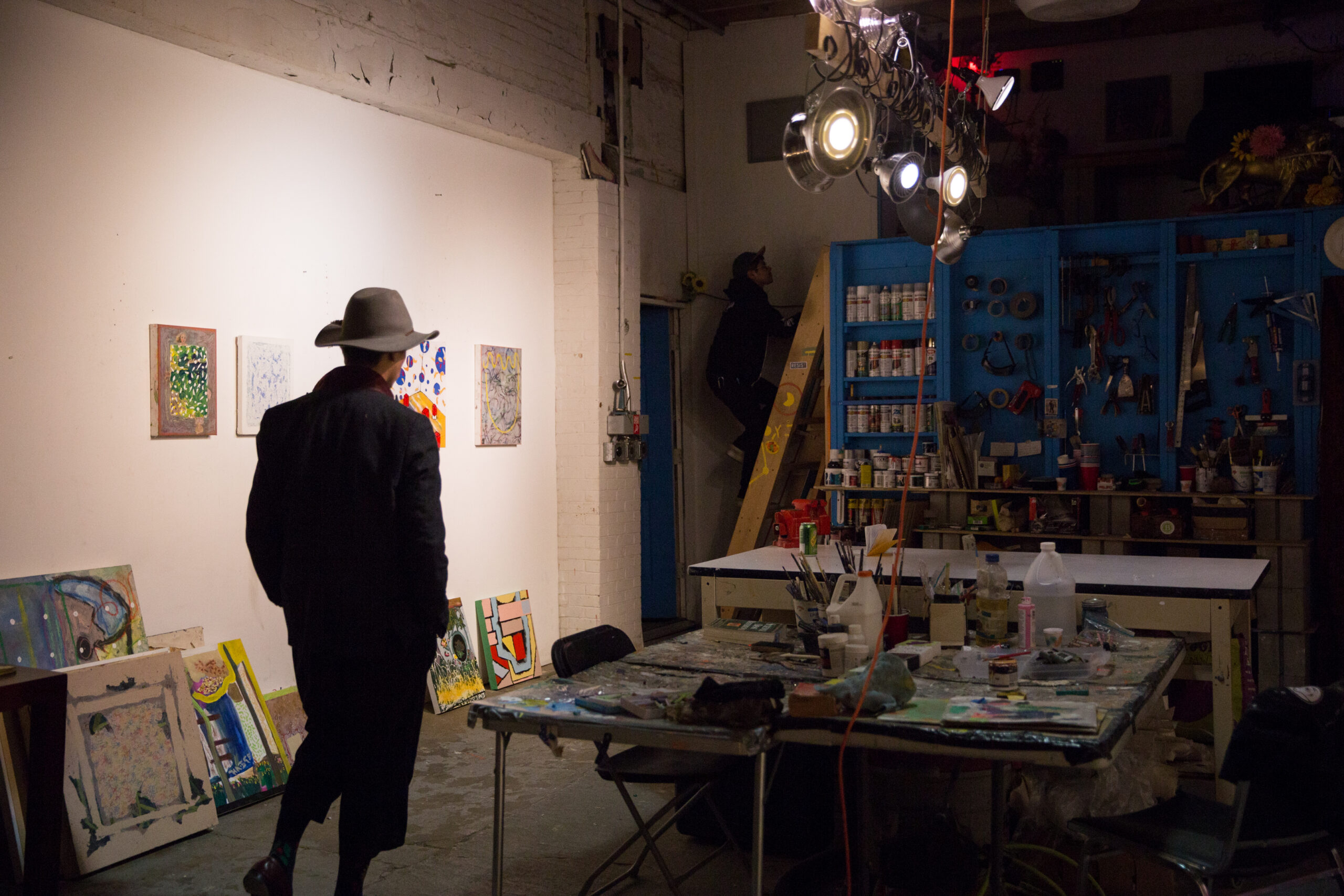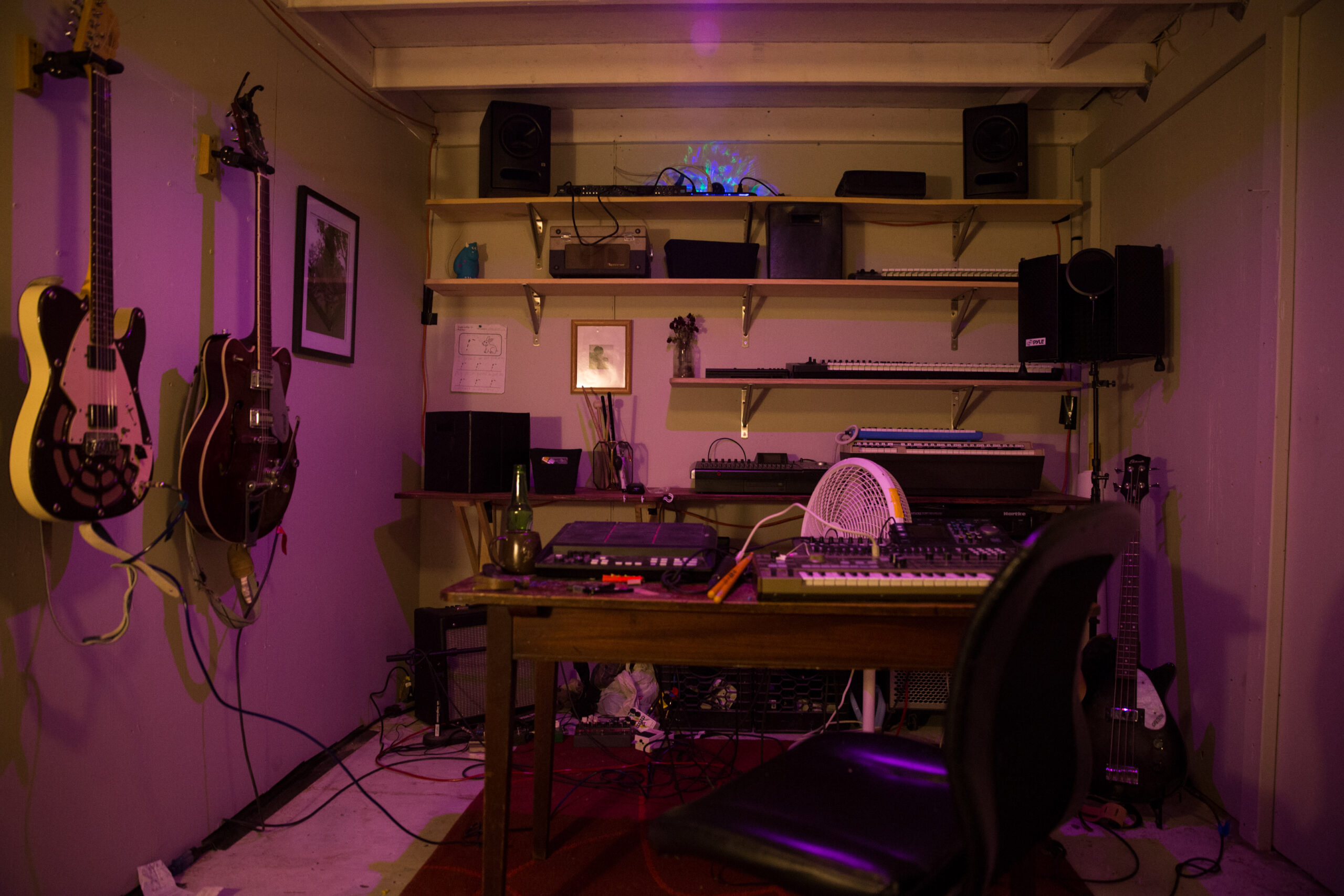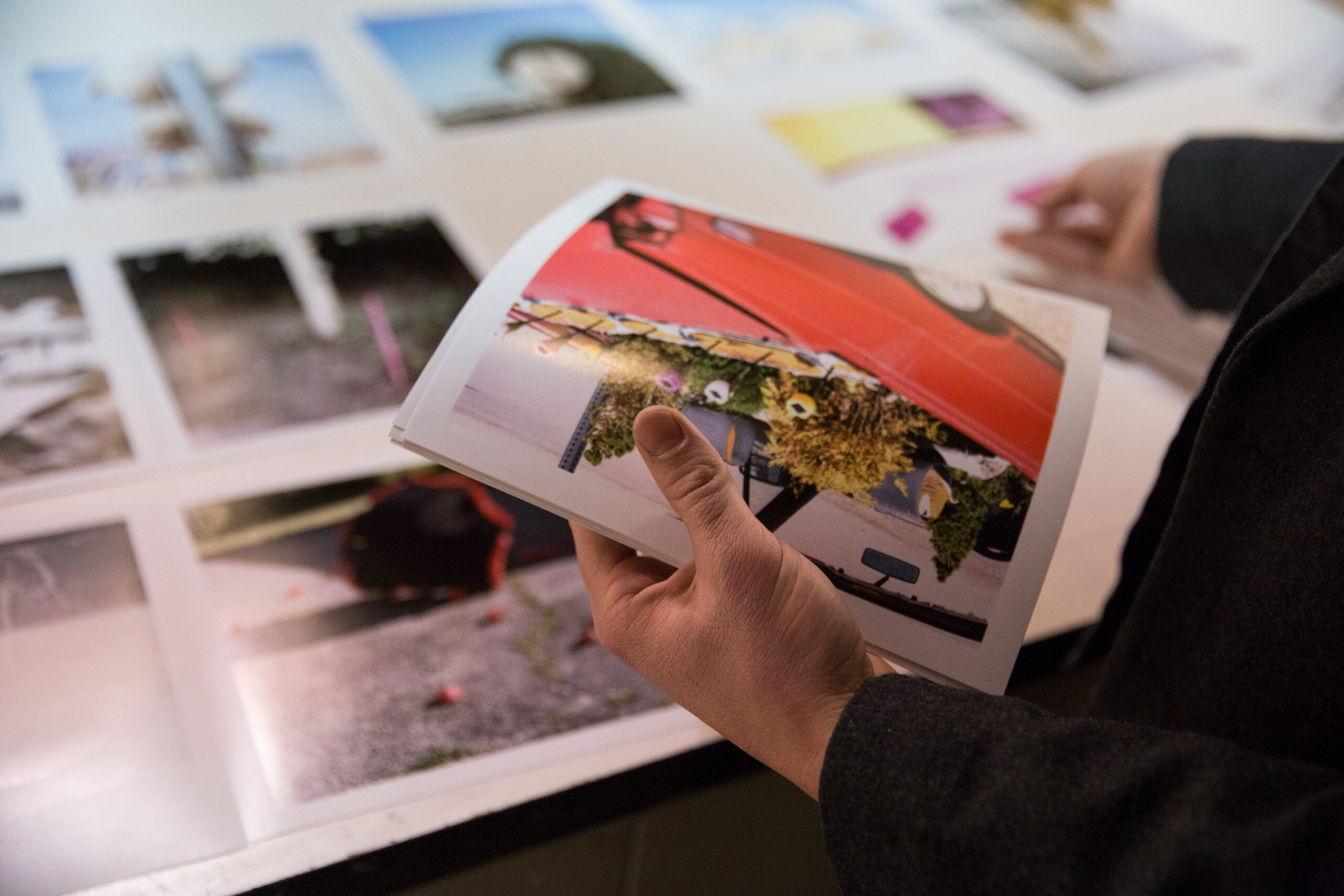‘The Spaceship’ settles in Portland
February 16, 2018
 Ann Basu
Ann BasuInside a well-lit warehouse somewhere between Portland’s East and West ends, five friends create. They make gestures on canvas, develop film, produce sound and cut video content. Sometimes they lie on the couch and scroll through Instagram, at others they gather around to critique one another’s art, like they did in college. The space holds no natural light and yet effuses incandescence. At various points throughout the day, the five leave the compound—which they endearingly call “the Spaceship”—to go on solitary walks, gather subject matter or report to day jobs.
Comprised of Henry Austin, Hector Magaña, Wilder Nicholson, Cody Stack and Noah Fardon, the group settled in this space after graduating in 2016, relocating from the College’s Edwards Center for Art and Dance and a barn on Bowker Street, which the five converted to a gallery of sorts during their senior year.
“It’s rather a hive mind,” said Stack. “Henry once said that it’s like all our work is fermenting together in the same bowl, just infecting one another. We have conversations nightly; we live in the same house; we’re best friends. The largest part … is the support, whether that be conversational support, or everyone showing up at a frequent rate—the nightly ‘hey come check this out, what do you think?’”
The five create individually, mostly, until the time of the night comes to shoot the breeze or to ask for brazen criticism. Each resident works across mediums—Nicholson, the group’s resident freelance videographer, will often decorate a set of 4×4 inch canvases off the cuff. It earns a place on the wall among Stack’s collection of ever-evolving, process-based paintings, which use texture as a medium for “talking about art through art,” as he puts it.
Stack’s work feels patterned yet random; the canvases that litter the studio aim to invoke abstraction as opposed to representation, dwelling in the process of answering a question rather than the answer.
“It’s almost like an internal battle manifesting of questions of aesthetics, compositions, forms, lines,” Stack said. “I largely focus on questions of beauty, and beauty in the form of traditional painting. I really like to challenge that.”
In totality, Stack continues to create a curated collection of objects—disparate in subject matter, medium and emotion—that form around one singular, constantly evolving idea.
“Nothing is finished, nothing could not get painted over, or painted on top of, or altered,” said Stack. “Suddenly you have this cacophony that feels disjointed but at the same time feels interesting in that way. You just kind of have to assess it for itself.”
In the bathroom resides Magaña, whose post-graduation dream of a darkroom all to himself led him to convert the crowded hallway leading up to the toilet into his very own developing studio, complete with an enlarger recently donated by Associate Professor of Art Michael Kolster.
Magaña began shooting film at Bowdoin, where he fell in love with the process of film development—of spooling, unspooling and going through the entire chemical process, which takes around 45 minutes to complete. Behind the black curtain, the entire operation is secluded. He gestures toward the timer he has connected to the safelight and enlarger, barely noticeable features that, within the past two weeks, have allowed for printing in black and white.
“This is my favorite spot,” he said, a slight silhouette in the three-foot corridor. “I’m just working on patching up some light leaks.”
Out of the dark and up a nearly vertical ladder Magaña, Austin and Nicholson divide their work in the “control center,” a wooden loft crammed with desks and computers where they write and edit audio, video and written content. Magaña displays the project he completed at Bowdoin that sparked his interest in documentary narratives: a set of black and white film photographs of a woman named Bianca, a 22-year-old Miami transplant who briefly settled in Brunswick during Magaña’s senior year.
“I fell in love with her, in a way that’s not romantic. When she left she gave me her pet rat named Franz and a broken record player. And I miss her very much.”
These days, Magana focuses on pigeons. Pigeons?
“Yeah,” he chuckled, “Pigeons. There’s specific flock that I very much adore at Congress Square Park … when they’re born they stay in the nest for forty days and when they leave the nest they join a flock and they remain in that flock for the rest of their lives. And that flock remains in a specific area for the rest of their lives. I think it’s amazing that every time I go to this specific part of the city it’s the same birds perched on the same ledge.”
Magaña likes to sit on a bench where he feeds and photographs the birds, scribbling prose in between. In the evenings, he heads over to Liquid Riot, the brewery, bar and distillery where he works. The majority of the five work day jobs in order to support their creative habits. The work-life balance is an ongoing struggle, said Stack, who works part-time as a property assistant.
The five are bound by their years spent in Brunswick. More than a year and a half out of college, they still live largely by the maxims of their various visual arts professors at Bowdoin, many of whom are able to visit the studio due to its close proximity to the College.
“We definitely internalized the message from every professor we had that was letting you know that the work you make now is closer to shit than not,” said Stack. “That was especially true in college.”
From Assistant Professor of Art Jackie Brown, they are reminded to “keep making, non-stop, even if it’s not meant to be made—work for the sake of work,” a concept that is evident in the studio’s panoramic arrangement of pieces large and small, vivid objects stretching across mediums and space.
Yet the studio remains uncluttered. Across the workbench, Austin scatters his most recent project, a collection of photos titled “Fake Flowers.” Focusing on a variety of man-made, artificial objects that evoke the natural world, the images seek to explore the junctions between science and art, which Austin describes as “very different but also very similar in that both seek truth or something real about the world.”
In addition to “Fake Flowers,” Austin is working on a documentary photo project at a local church and as a freelance videographer; most recently, Austin, Nicholson and Stack have been hired to produce a video series for the Maine Center for Contemporary Art in Rockland.
The goal for the future, they agree in unison, is to keep creating.
“I’m looking for ways to have more of my time than someone else does,” Stack said. “A lesson that one of our professors gave us is just, more than anything, try to buy your time. We don’t want things—we just want to be able to do this.”
The space heater whirs insistently in the background; dust hardly settles as Austin queues up a song of Fardon’s, an open-ended dreamy loop of nonchalant indie-rock. As they lounge on the couch, Austin, Magaña and Stack talk about their time at Bowdoin, when Edwards “had a lot of life,” and why they’ll continue to work in Portland for the foreseeable future—it’s cheap and the connections to endeared faculty are close. But mostly, they love the Spaceship for the community, the ‘hive-mind’ that’s mostly work, some play, and a lot of blurred lines between the two.
“I can finish a photo at one in the morning, and I can immediately call Hector over to have a critique. That’s not something I have to wait for. It can happen immediately. The next morning coming back into the studio with that conversation we had last night fresh on our mind,” said Austin. “[It] allows me to move on and take that step so much more quickly than I would otherwise be able to.”
“It’s a crucible of sorts,” Magana concluded.



Comments
Before submitting a comment, please review our comment policy. Some key points from the policy: